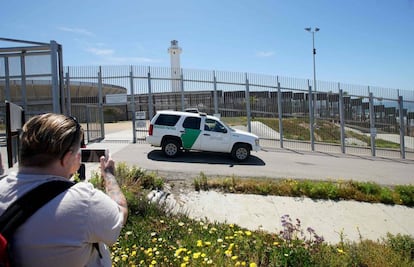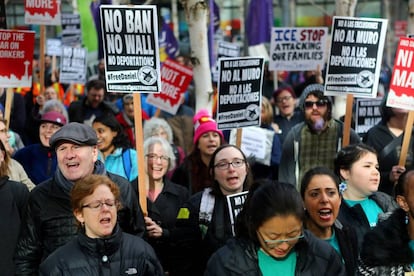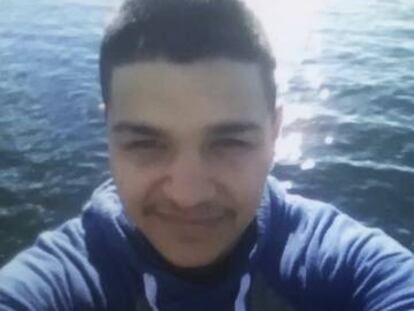US “dreamer” gets deported to Mexico overnight without trial
Young man was made to sign papers before being dumped on the other side of the border, say attorneys

The worst nightmare has just become a reality for illegal immigrants in the US under a federal protection program called DACA, or Deferred Action for Childhood Arrivals. On Tuesday, a “dreamer” (as these individuals are popularly referred to) named Juan Manuel Montes Bojórquez was sent back to Mexico despite being a beneficiary of the DACA program, introduced by former president Barack Obama as a way to protect the children of illegal immigrants.

Montes was shipped to Mexico through an expedited removal procedure on February 18, and did not get so much as a trial. The case came to light on Tuesday, after attorneys filed a complaint in California.
Montes, 23, had been living in the US since the age of nine. He is one of around 750,000 individuals who are eligible for social security numbers and work permits under DACA.
This is the first known deportation of a youngster belonging to what should be the most protected group out of all undocumented migrants living in the US.
CBP did not provide Mr Montes with any documentation or record of his removal
Complaint filed in court
The complaint was filed by lawyers from the National Immigration Law Center and three other firms before the United States District Court for the Southern District of California.
According to the complaint, Montes was walking down the street in Calexico, California, in search of a taxi on February 17, close to midnight. A customs and border protection (CBP) officer came up to him and began interrogating him aggressively, then called a colleague. Montes did not have his wallet, which contained his DACA permit; he said he had left it inside a friend’s car.
Montes was placed inside a patrol car and taken to the border station of Calexico, where he was interrogated and asked to sign some documents. He was not given copies of the same.

“He was not provided the opportunity to see an immigration judge, seek the assistance of counsel, or otherwise present his DACA paperwork or work authorization before he was removed from the United States,” reads the complaint.
He decided to try to get back into the US by jumping the fence, as he had seen other people do
The complaint seeks to force the CBP to release “agency records improperly withheld” that formed the basis for his expedited deportation. “CBP did not provide Mr Montes with any documentation or record of his removal. Through counsel, Mr Montes has repeatedly attempted to obtain documentation, but there has been no response to his inquiries.”
At 1am, Montes found himself on the other side of the border. He phoned his friend and asked him to take the DACA papers over to the CBP, and spent the night at another friend’s house in Mexicali. A few days later, he was beaten by a group of thieves as he walked down the street.
He decided to try to get back into the US by jumping the fence, as he had seen other people do, he told USA Today. But he was deported again on February 20, after signing another set of documents whose content he did not understand, and copies of which he did not receive.
His attorneys note that Montes suffers from a cognitive disease after a traumatic brain injury, but completed his elementary and high school studies in a special education program. He was currently enrolled in a community college and had previously worked as a crop picker in California and Arizona.
Montes applied for DACA in 2013, one year after the program was created. It was granted in in 2014 and renewed for a further two years in 2016, according to his lawyers. That would make him a recipient until 2018.
President Donald Trump signed his anti-immigrant executive order on January 25, five days after taking the oath of office. That order, and the regulatory guidelines issued later by Homeland Security, effectively ended the priority system for deportations in place under Barack Obama. Since then, any undocumented migrants who run into immigration police may be subject to deportation, regardless of their record or years of residency. The order meant that nobody is safe anymore.
But there was still the issue of the “dreamers.” During the campaign, Trump sent out contradictory messages regarding his own intentions. They were not mentioned in the executive order. In television statements, he said that DACA recipients had nothing to fear. But there is nothing down on paper. And there are at least two cases of “dreamers” who were arrested for deportation.
English version by Susana Urra.
Tu suscripción se está usando en otro dispositivo
¿Quieres añadir otro usuario a tu suscripción?
Si continúas leyendo en este dispositivo, no se podrá leer en el otro.
FlechaTu suscripción se está usando en otro dispositivo y solo puedes acceder a EL PAÍS desde un dispositivo a la vez.
Si quieres compartir tu cuenta, cambia tu suscripción a la modalidad Premium, así podrás añadir otro usuario. Cada uno accederá con su propia cuenta de email, lo que os permitirá personalizar vuestra experiencia en EL PAÍS.
¿Tienes una suscripción de empresa? Accede aquí para contratar más cuentas.
En el caso de no saber quién está usando tu cuenta, te recomendamos cambiar tu contraseña aquí.
Si decides continuar compartiendo tu cuenta, este mensaje se mostrará en tu dispositivo y en el de la otra persona que está usando tu cuenta de forma indefinida, afectando a tu experiencia de lectura. Puedes consultar aquí los términos y condiciones de la suscripción digital.
More information
Archived In
Últimas noticias
Most viewed
- Why we lost the habit of sleeping in two segments and how that changed our sense of time
- Trump’s obsession with putting his name on everything is unprecedented in the United States
- Pablo Escobar’s hippos: A serious environmental problem, 40 years on
- The Florida Keys tourist paradise is besieged by immigration agents: ‘We’ve never seen anything like this’
- Charles Dubouloz, mountaineering star, retires at 36 with a farewell tour inspired by Walter Bonatti










































